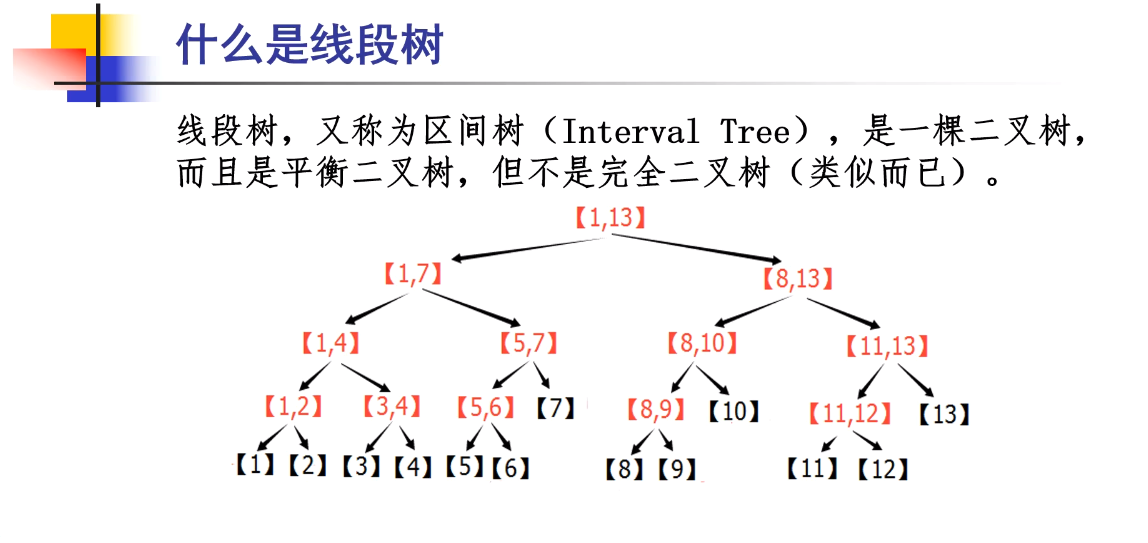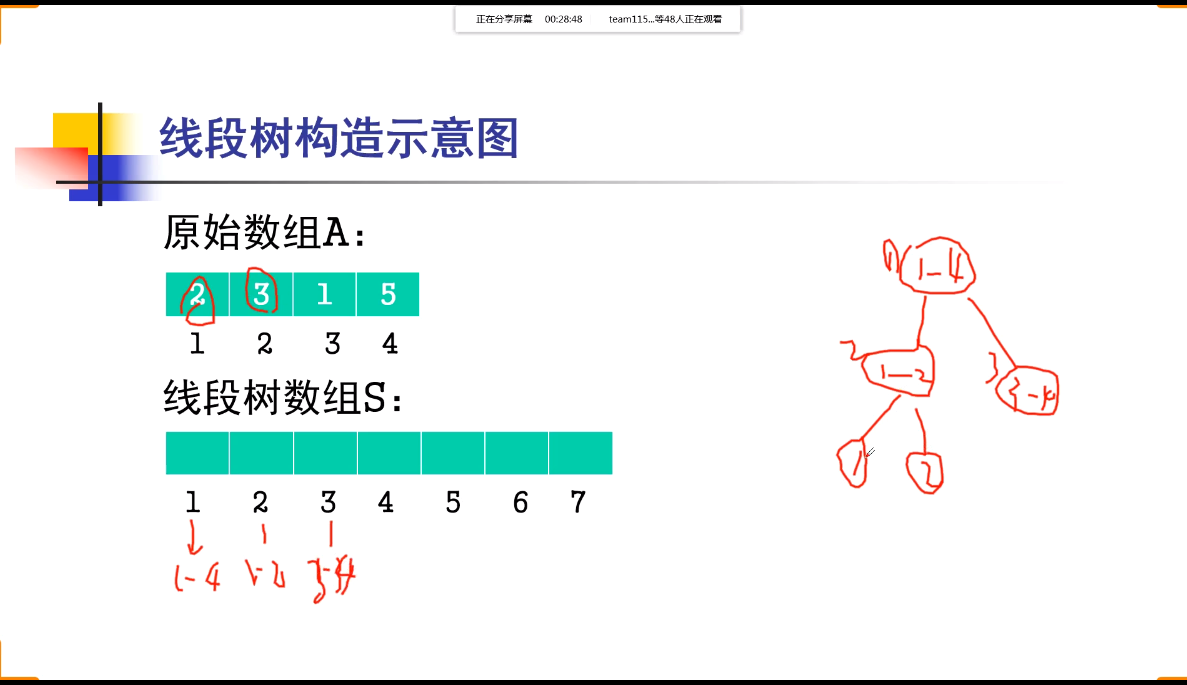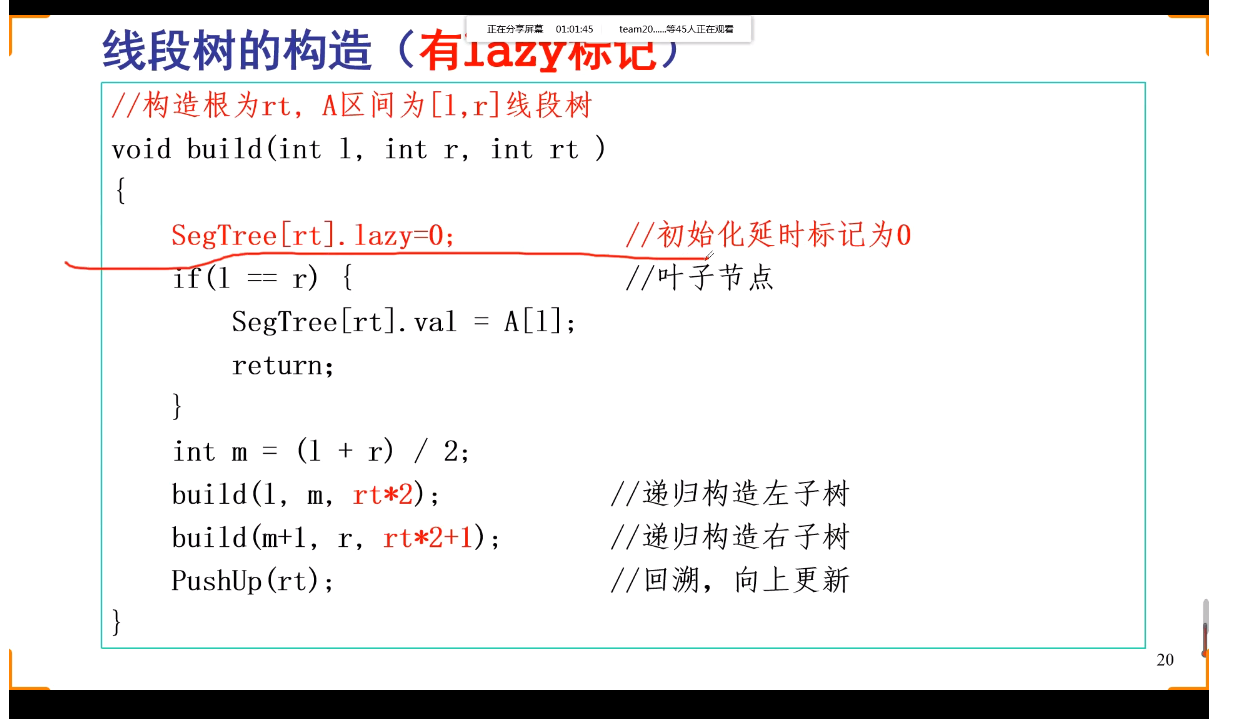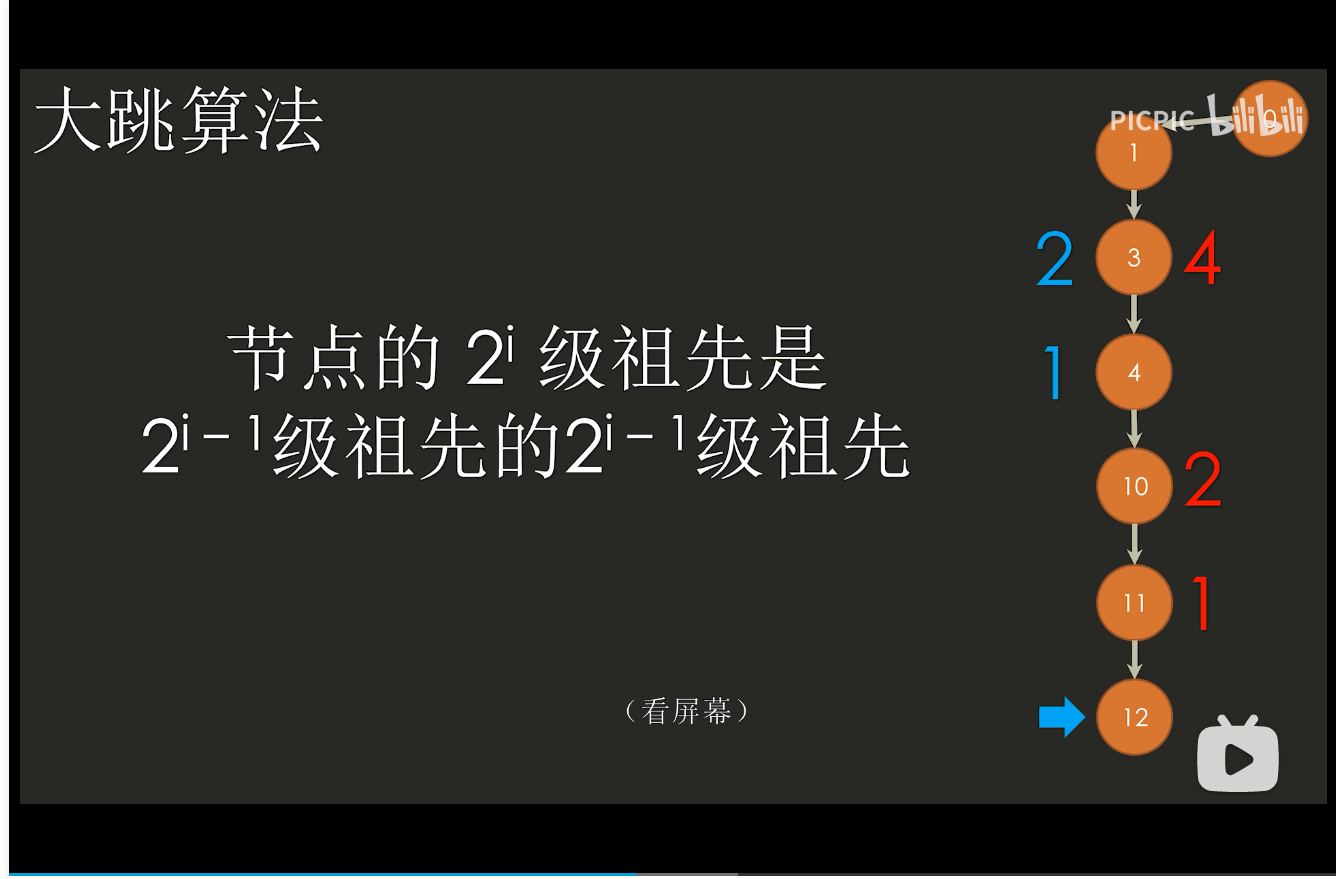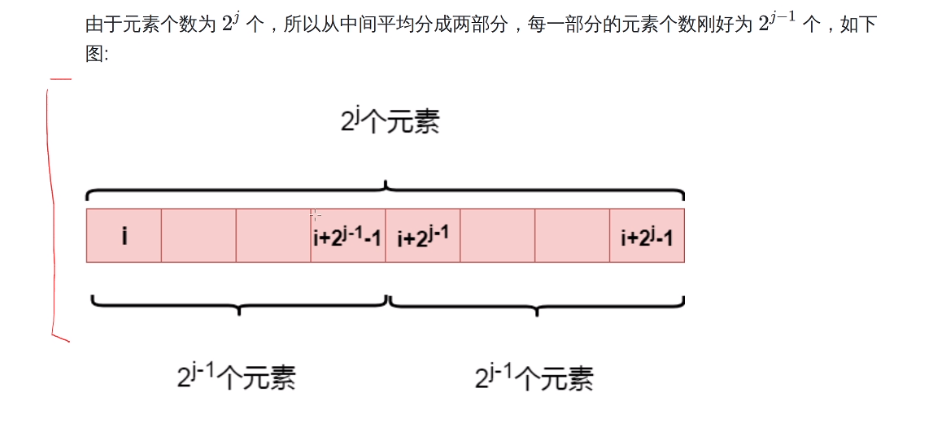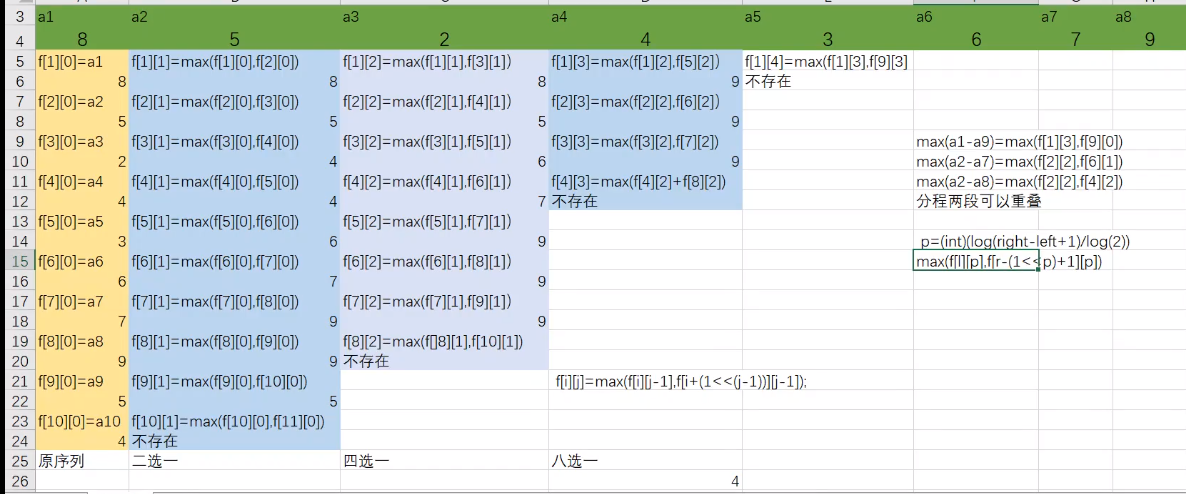树状数组
树状数组

lowbit
lowbit()函数用来取一个二进制最低位的一与后边的0组成的数
例:5(101),lowbit(5)=1(1)
12(1100),lowbit(12)=4(100)
1 | int lowbit(int t) |
原理,二进制数的负数是正数取反加一
12(1100),-12(0100)
求逆序数对
基本思想:开一个数组c[n+1],初始化为0,记录前面数据的出现情况;当数据a出现时,就令c[a]=1。这样的话,若求a的逆序数,只需要算出在当前状态下c[a+1,n]中有多少个1,因为这些位置的数在a之前出现且比a大。==复杂度O(n^2)==
树状数组的经典应用
另开一个==树状数组d[n+1]==,初始化为0,d[i]记录i结点所==管辖范围内==当前状态有多少个数;
当添加数据a时,就向上更新d数组,这样,当求a的逆序数时,只需要算sum(n)-sum(a)即可;
“区间修改+单点查询”的树状数组
基本思想:通过“差分”的方法(数组中记录的是每个元素与前一个元素的差),把问题转化为常规树状数组!
1 | 若原数组为a[i],设数组d[i]=a[i]-a[i-1](a[0]=0),则可以通过求d[i]的前缀和实现单点查询a[i]。 |
区间修改
当给区间[1,r]加上x的时候,a[1]与前一个元素a[l-1]的差增加了x,a[r+1]与a[r]的差减少了x。根据d[i]数组的定义,只需给d[l]加上x,给d[r+1]减去x即可。
1 | //单点更新“差分”,为区间修改做准备(c是树状数组) |
“区间修改+区间查询”的树状数组

1 | //维护2个树状数组 |
B - Minimum Inversion Number
思路:
首先是怎么求其中一个序列的逆序数对
假设序列开始一个数都没有
每添加一个数之前计算序列有多少数大于该数(即在该位添加时会增加多少对逆序数)<===算作一个状态
将所有状态相加即是该序列的逆序数对数量
拿样例来说
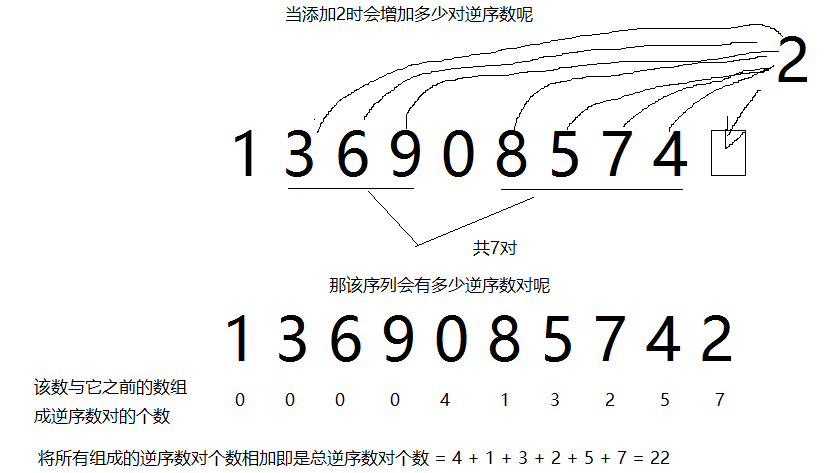
当a0移动到an-1末尾后减少了它之后能与它形成逆序数对的个数(比它小的数)
增加了在末尾时它之前能与它形成逆序数对的个数(比它大的数)
由于下一个循环数列必定是将头移至尾,所以减少的个数为比它小的个数,增加的个数为比它大的个数
因为数是不会重复的且为0~n-1共n个,所以 a[i] - 1就是序列中比它小的数的个数,n - a[i]就是序列中比它大的数的个数
1 |
|
